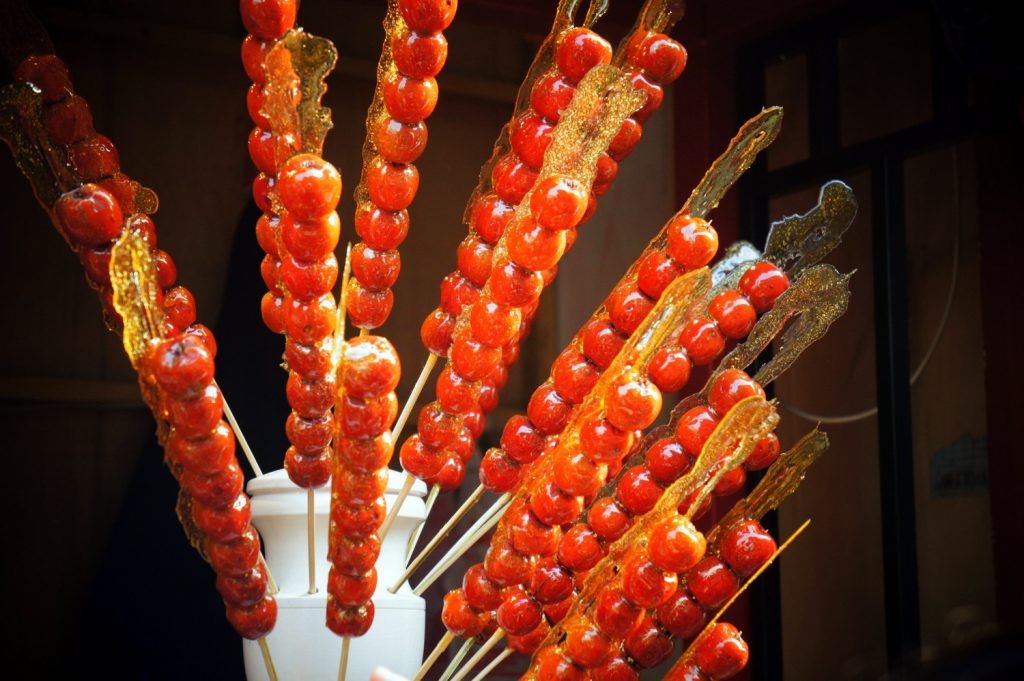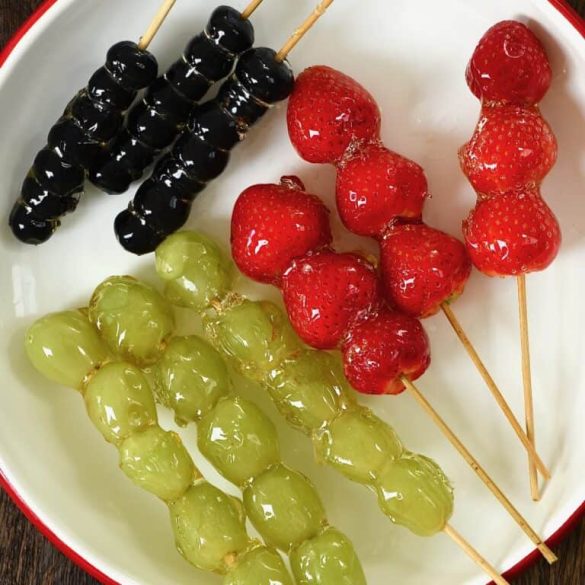In the grand tapestry of Chinese cuisine, there exists a simple yet enchanting delicacy that has captured hearts and palates for generations. This is tanghulu, a traditional Chinese snack that marries the natural tartness of fruit with a candied sweetness, creating a harmonious symphony of flavors. The origin of tanghulu is as rich and colorful as the treat itself, a story steeped in history that continues to resonate in the bustling streets and vibrant markets of China today.

The Humble Beginnings: A Tale of Tanghulu
The tale of tanghulu begins in the Northern Song Dynasty, over a thousand years ago. It is said that during the cold winters, vendors sought ways to preserve fruit, leading to the innovation of coating it in a hard sugar shell. The result was a delightful confection that could withstand the chill and satisfy the sweet tooth of emperors and commoners alike.

The Art of Tanghulu: A Craft Refined Through Centuries
Creating tanghulu is an art that requires precision and care. The process involves skewering fruits—typically hawthorns—on bamboo sticks, then dipping them into a hot, sugary syrup that quickly hardens to form a shiny, crystalline shell. Over time, the variety of fruits used has expanded, with strawberries, kiwis, and grapes joining the traditional hawthorn.
Tanghulu Today: A Sweet Link to the Past
Today, tanghulu remains a beloved snack, especially during festivals and celebrations. It is not just a treat but a sweet link to the past, a cultural icon that represents the ingenuity and continuity of Chinese culinary tradition. Walking through the streets of Beijing, one can hear the call of vendors selling this time-honored snack, a sound as enduring as the Great Wall itself.

